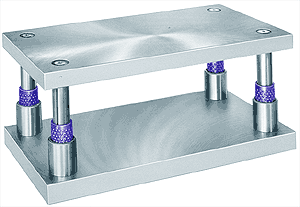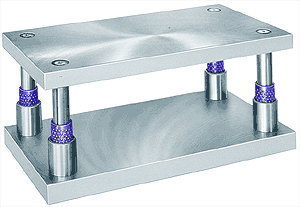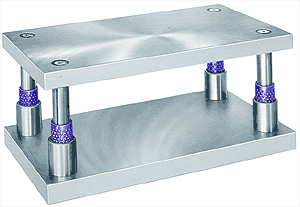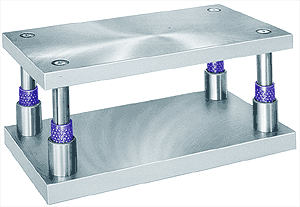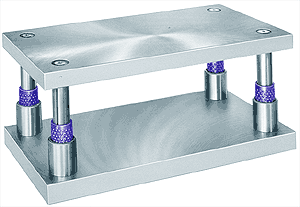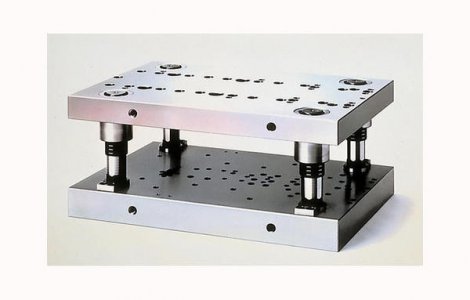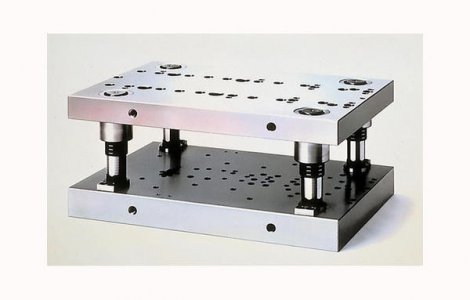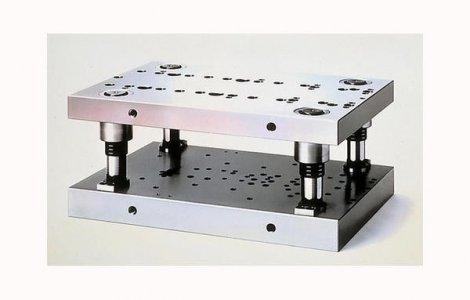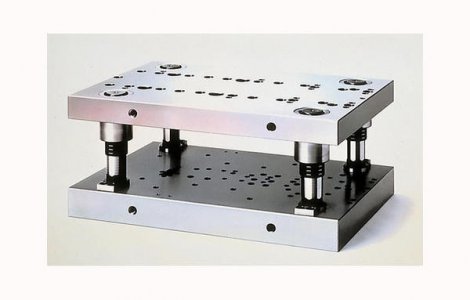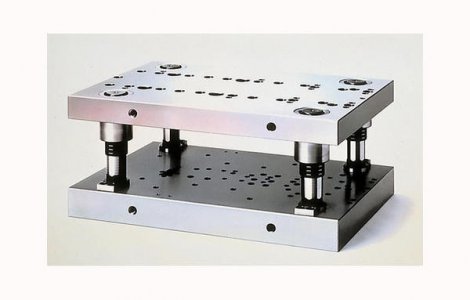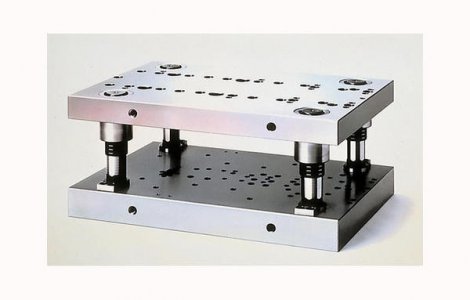I can build that die for you, but I would rather teach you how to build it.

From you introduction I see you have a Bridgeport so you have the tool to build the die. A rotary table would be helpful in this case, but not required. The shape is reasonably simple, and the draft angle is done with a tapered endmill.
What Steve said above is correct, but I'm guessing it would take at least a 100 ton press to do all 15 fingers at once. What kind of a press are you planning on using? A 20 ton hydraulic press would do them one at a time.
The die will consist of two parts: The punch and the die. Now all you need is method of holding the two parts in precise alignment, this is done with a die set. The die would be machined to fit the final profile that you want, the punch would be the same shape, but smaller to account for the material thickness.
The good news is that there are little ears sticking out just behind the bend, these can be used to keep the part from trying to squirt out when pressing. One thing to concider is the hard edge left by the plasma. This would dictate the use of D-2 tool steel for the die, it's high chrome content gives it pretty good abrasion resistance. It also is a bit of a pain to machine. A-2 tool steel would work for the punch. There is enough draft in the shape to keep it from sticking in the die, so a fancy ejector is proabaly not needed.
It looks like about 16 hours of labor, and about $400 in materials for a single station die. This is a rough guess, but a 15 station die would be in the $10,000 range.
![IMG_1596[1].JPG IMG_1596[1].JPG](https://www.hobby-machinist.com/data/attachments/84/84233-8f0470c1c955870e816e0df4be5fe0e8.jpg)
![IMG_1595[1].JPG IMG_1595[1].JPG](https://www.hobby-machinist.com/data/attachments/84/84234-9228ef7b129e2028f72d601c4572eb45.jpg)
![IMG_1594[1].JPG IMG_1594[1].JPG](https://www.hobby-machinist.com/data/attachments/84/84235-351e3c5df0cf7c7fad6f587761be64b4.jpg)
![IMG_1593[1].JPG IMG_1593[1].JPG](https://www.hobby-machinist.com/data/attachments/84/84236-87efe95543c9c2494295621fd1ce4b26.jpg)
![IMG_1596[1].JPG IMG_1596[1].JPG](https://www.hobby-machinist.com/data/attachments/84/84233-8f0470c1c955870e816e0df4be5fe0e8.jpg)
![IMG_1595[1].JPG IMG_1595[1].JPG](https://www.hobby-machinist.com/data/attachments/84/84234-9228ef7b129e2028f72d601c4572eb45.jpg)
![IMG_1594[1].JPG IMG_1594[1].JPG](https://www.hobby-machinist.com/data/attachments/84/84235-351e3c5df0cf7c7fad6f587761be64b4.jpg)
![IMG_1593[1].JPG IMG_1593[1].JPG](https://www.hobby-machinist.com/data/attachments/84/84236-87efe95543c9c2494295621fd1ce4b26.jpg)

